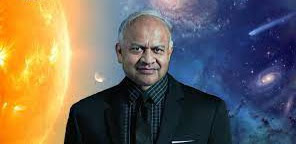THE STORY OF SHUNYA
You've probably heard people say that Aryabhatta invented zero, but the truth is that he contributed significantly to formalising the use of the symbol in mathematical notation.
But have you ever wondered—if zero didn’t exist before him, how did people in Ramayana’s time count Ravana’s ten heads? Let’s dive into the fascinating story of zero and clear up some common myths!
1. Zero as a Placeholder vs. Zero as a Number
The distinction is crucial. Ancient civilisations used placeholders in numeral systems before zero became an abstract concept:
Babylonians (circa 300 BCE) used a placeholder symbol in cuneiform for empty positions in their base-60 number system.
Mayan civilisation (circa 4th century CE) used a shell-shaped glyph as zero in their vigesimal (base-20) system.
However, these were not used as numbers in their own right, which is where Indian mathematicians went a step further.
2. Brahmagupta, the First to Define Zero as a Number: While Aryabhatta used a place-value system that implied zero, it was Brahmagupta (7th century CE) who:
Defined zero as a number, not just a placeholder.
Formulated rules involving zero in calculations (e.g., a - a = 0; a × 0 = 0).
He used a dot (.) beneath numbers to denote zero, called “shunya”, meaning void or emptiness.
3. Philosophical depth of ‘Shunya’ in Indian Thought: The idea of emptiness or void is deeply philosophical in India—rooted in Buddhism and Vedanta:
In Buddhism, śūnyatā (emptiness) represents the absence of inherent existence.
In Vedanta, the idea of “neti neti” (not this, not that) aligns with a concept that goes beyond form, just like zero goes beyond quantity.
So, zero wasn’t merely a mathematical utility—it reflected deep metaphysical insights.
4. Decimal System and Zero’s Role: The decimal system was in use during Vedic times. The Indian numeral system was revolutionary:
It allowed for efficient calculation, positional value, and the use of large numbers with compact notation.
5. Cultural Legacy: Indian numerals (including the zero) were transmitted to Europe by Arab scholars around the 12th century. That’s why it’s sometimes called the “Arabic numeral system” in the West, even though it’s Indian in origin.
6. Zero in Other Contexts: Depending on context, zero plays different roles:
In set theory: Zero is the cardinality of an empty set.
In coordinate geometry: It’s the origin point.
In thermodynamics: It relates to absolute zero.
In computing: Binary systems use 0 and 1 as foundational.
Conclusion: Zero wasn’t needed to count in ancient times—it was needed for efficient notation and abstract calculation.
The symbol for zero is a tool, not a necessity for all counting systems.
Aryabhatta’s genius lay in using a place-value system, but Brahmagupta truly defined zero mathematically.
Zero as a concept is as much philosophical as it is mathematical.
India’s role in the evolution of zero and the decimal system is foundational to modern mathematics.















